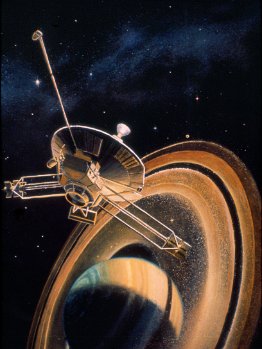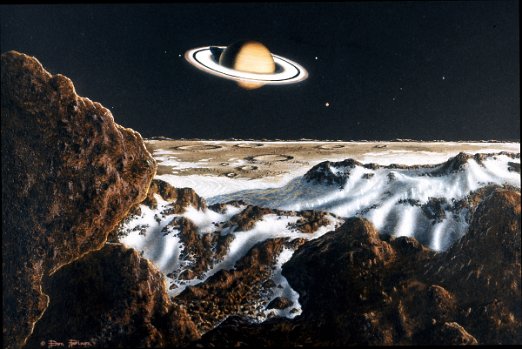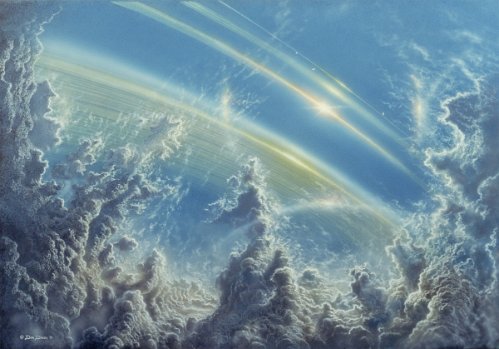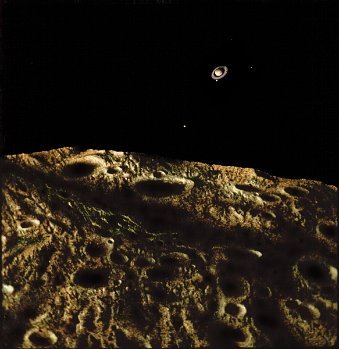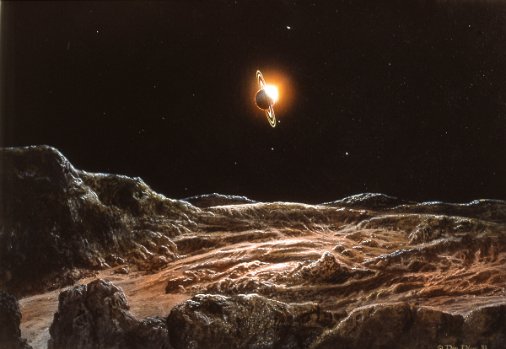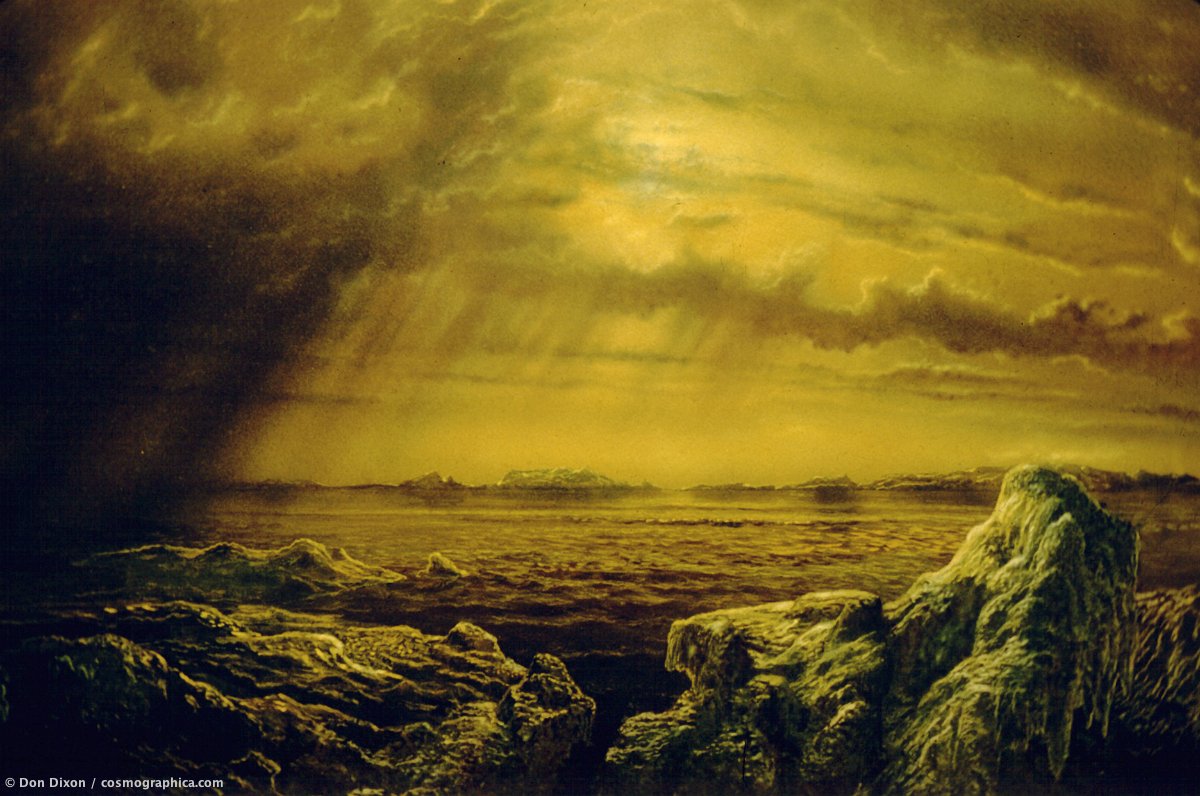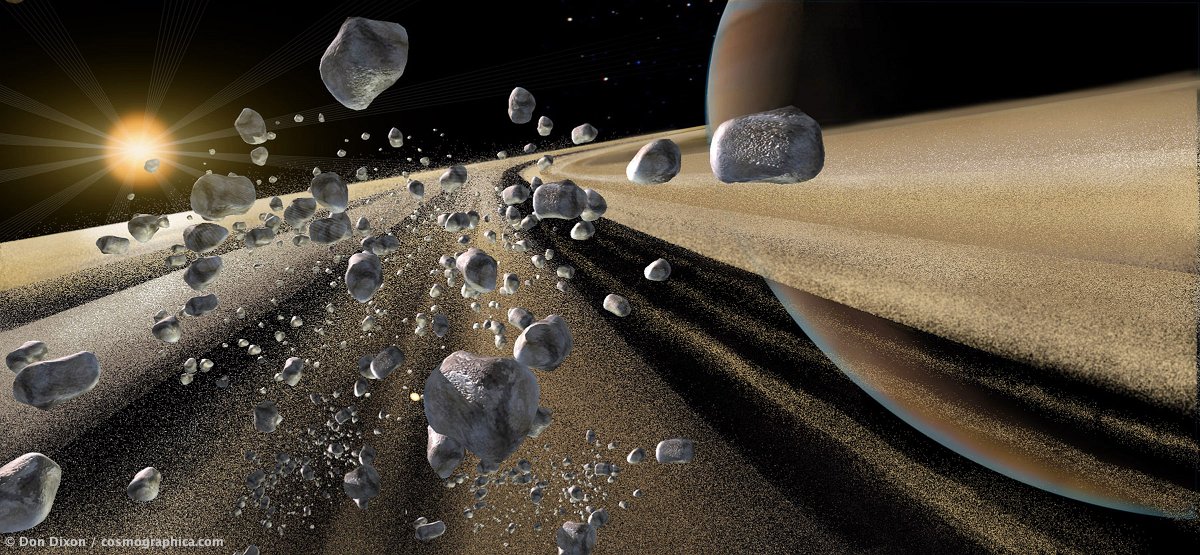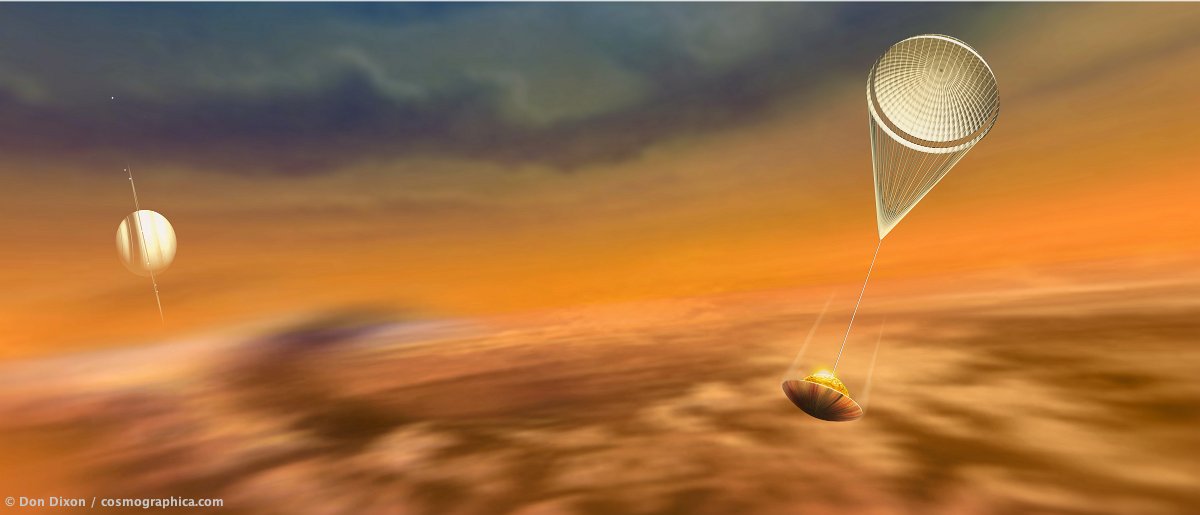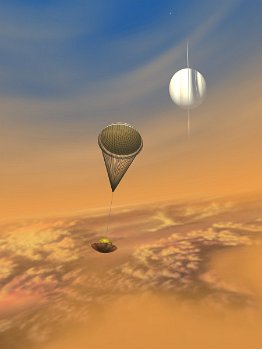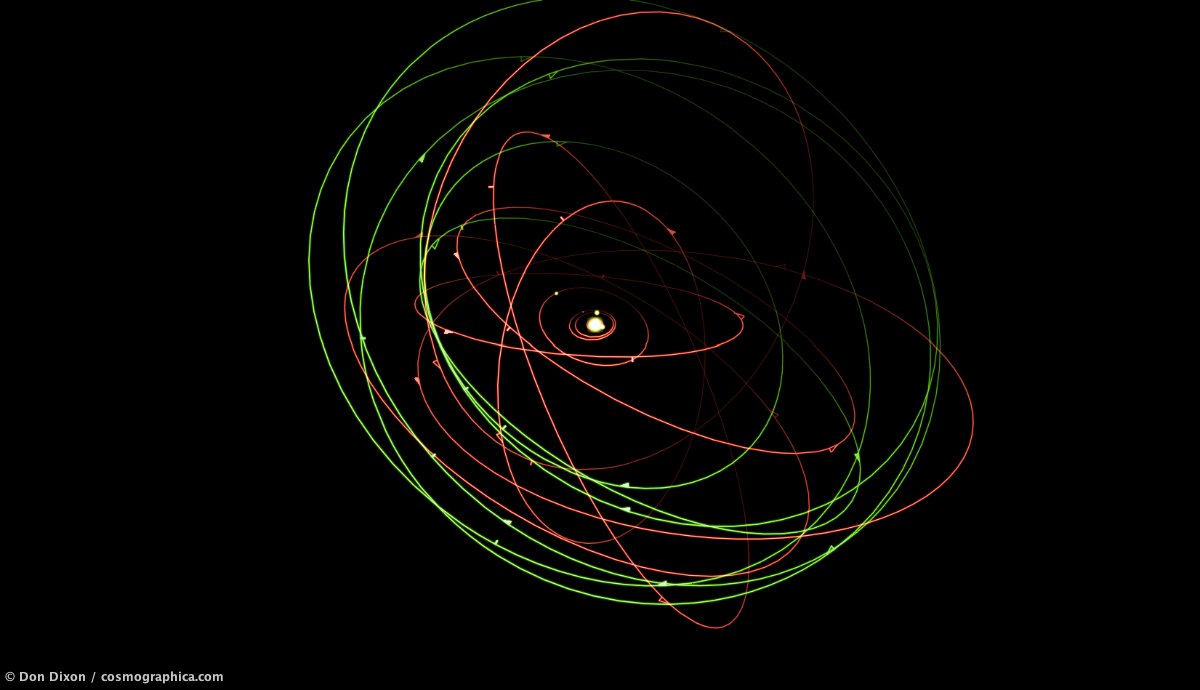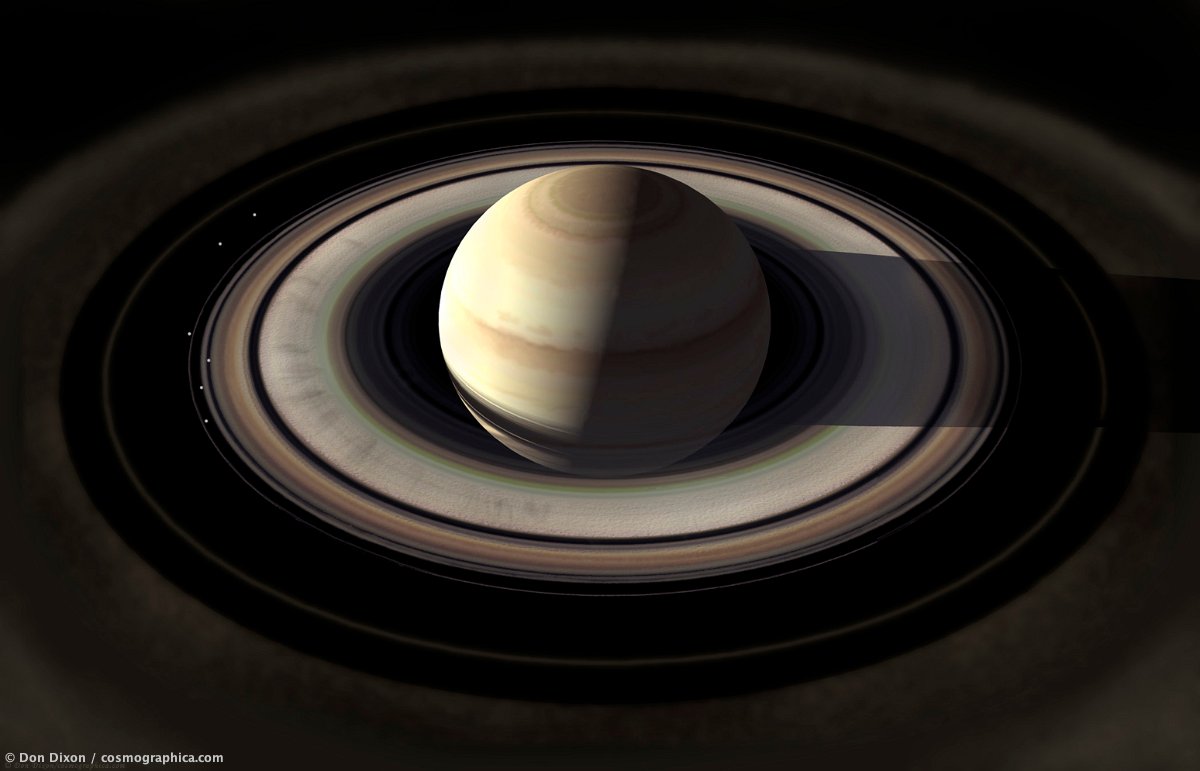
Lord of the RIngs: Saturn's magnificent system of rings extends nearly 200,000 miles from the center of the planet, but only the denser regions are easily observerd. Saturn's glorious ring system and assorted inner satellites comprise one of the wonders of the universe. Digital painting for Scientific American. © 2012 Don Dixon / cosmographica.com
Titan Dawn
118 Titan Dawn; The ringed planet Saturn hangs like a shining bow in the sky of its largest moon Titan, which is shrouded in a dense atmosphere of nitrogen hazed by hydrocarbons. Although glimpses of Saturn from the surface are probably exceedingly rare, they are not impossible. Drifts of methane snow blanket the landscape. Originally painted in acrylic and gouache on illustration board in 1980, this image has been digitally restored. copyright 2014 Don Dixon / cosmographica.com
